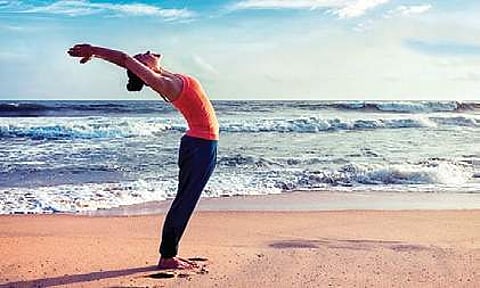

Osteoporosis, termed as a silent disease as its effects are not often seen at an early stage, affects women more than men. Further, women with an early menopause have a 56 per cent increased risk of osteoporosis at a later age (in the 70s). They are four times more affected by early bone loss as compared to men, say doctors. As women age, the level of estrogen (primary female hormone responsible for bone health) further decreases.
The decrease begins in the perimenopausal (transition period) stage and is greater after menopause. As a result, there is an increased bone loss that makes women more prone to osteoporosis. While all women experience a drop in bone density when they go through menopause, those with an early menopause have more chances of developing weak and brittle bones as compared to those who have a late menopause. If we go by the age, women with menopause before 47 years have more than 50 per cent increased risk of osteoporosis in their late 70s as compared to a risk of 30 per cent in women with late menopause.
“During the menopausal transition period (perimenopause), the average reduction in bone mineral density (BMD) is about 10 per cent. About 25 per cent of postmenopausal women can be classified as fast bone losers,” says Dr Meenakshi Banerjee, Senior Consultant, Gynaecologist & Obstetrician, Madhukar Rainbow Children’s Hospital, Delhi.
What causes early menopause?
Multiple reasons: Smoking, lack of physical exercise or less exposure to sun, consumption of steroids even if warranted by other health conditions, all these contribute towards menopause. Very thin women too face the risk of an early menopause. However, early menopause can sometimes be caused by genetic factors. “Premature ovarian failure also leads to an early menopause. Sometime ovaries have to be removed due to a medical condition or malignancy. This can also cause an early menopause,” says Gynaecologist & Obstetrician, Dr Neha Khandelwal.
The way out?
Exercise, sunshine and diet, can delay the onset of osteoporosis. Adopting a healthy lifestyle coupled with adding fresh fruits, veggies and herbs in daily diet helps too. So does a diet rich in dairy products. Women must include green leafy vegetables like spring greens, spinach, broccoli, baked beans, nuts (especially almonds), soya beans, sardines, salmon, nuts, dried beans and sunflower seeds in their diet. A simple way to increase Vitamin D (essential to bone health because it enables absorption of calcium and phosphorus) is sitting under the early morning sun for 20 minutes.
“A healthy and balanced diet is fundamental to bone health because it supplies proteins, carbohydrates, fats, vitamins, minerals and other nutrients vital for tissue renewal and growth. Besides, walking and gentle aerobics are excellent for bone health as these promote the entry of calcium into the bone mass where it is used for improved strength and growth,” says Dr Banerjee.
Other health issues
It is not just osteoporosis that stares women in the eye with an early menopause, but a host of other health issues too. As per a 2020 study published on human reproduction, women who undergo premature menopause are almost three times more prone to physiological problems like diabetes, high blood pressure, heart disease, stroke, arthritis, asthma and breast cancer and mental issues like depression and anxiety.
Age and income
In India, menopause generally happens between 50 and 60 years while in the West, it is between 70 and 80 years. Globally, the incidence of premature menopause is one cent women while in India, the rate has risen to 1.5 per cent in the last two years. Also, the incidence of menopause at 50 in high socio-economic group is 25 per cent, while the figure is 65 per cent in women of low socio-economic group.